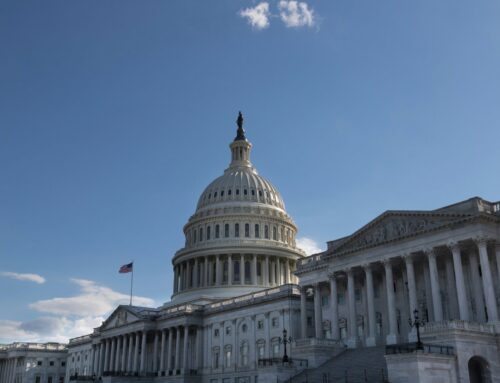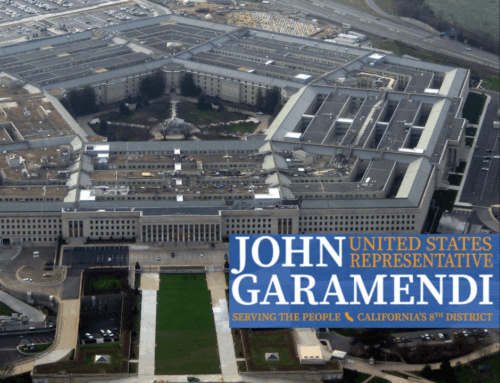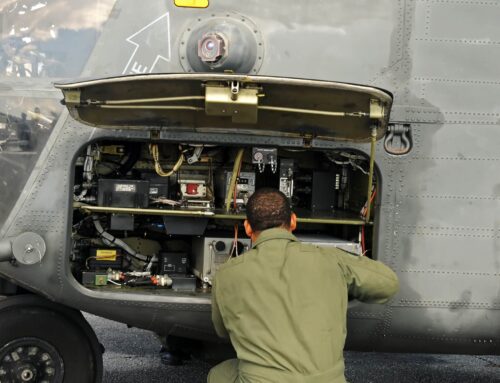The National Defense Authorization Act (NDAA) is where the House and Senate Armed Services Committees traditionally weigh in on Pentagon spending and policy. We say “traditionally” because this year these committees also added $156 billion for the Pentagon through reconciliation—the so-called One Big Beautiful Bill—on top of whatever appropriators include in the Pentagon’s regular spending bills.
Last week, in a closed-door hearing, the Senate Armed Services Committee (SASC) marked up and passed its version of the NDAA. Then on Tuesday, after a marathon 14-hour markup, the House Armed Services Committee (HASC) followed suit.
The NDAA generally doesn’t deliver many wins for taxpayers. On the contrary, it tends to include policies that could boost Pentagon contractors’ profits at taxpayers’ expense. But this year we actually have a couple of roses to go with our bouquet of thorns. Let’s start with a rose.
Rose: Warrior Right-to-Repair
As we recently explained in Stars and Stripes, an episode of Budget Watchdog AF, and in a letter to the Hill, giving servicemembers the tools and data necessary to repair their own equipment is common sense. Thanks to the leadership of Senators Elizabeth Warren (D-MA) and Tim Sheehy (R-MT) and Representative Maggie Goodlander (D-NH), both the Senate and House versions of the NDAA include provisions requiring contractors to provide reasonable access to those tools and data. In the House, amendment #5322 securing the right to repair was included in an en bloc package, a set of less controversial amendments that generally pass by voice vote.
This change could save taxpayers tens of billions of dollars annually. Servicemembers or Pentagon civilian employees can perform repairs for a fraction of what contractors charge. It will also protect servicemembers and bolster readiness by allowing immediate fixes instead of forcing servicemembers to wait weeks or months for contractor support.
It’s a big win for taxpayers—and common sense—and our supporters helped make it happen. Thank you.
Thorn: Senators Set Money Guns to Full-Auto, House Shows “Restraint”
Like a drunken best man at a bachelor party, Senate authorizers arrived at their closed-door NDAA markup with money guns blazing, spraying billions of dollars across the Pentagon budget. After staff swept up the bills and ran them through money counters, the total came to $32 billion. It would have been hard to watch, which is probably why they did it behind closed doors—but the result is the same: wasteful spending and bad policies.
For the first time, the president’s national security spending request topped $1 trillion, yet Senate authorizers somehow thought that wasn’t enough. This unrestrained spending allows Congress to abandon any efforts toward strategic prioritization, leading to wasteful programs that underperform—like the F35—or that aren’t needed—like the Sentinel ICBM. Senator Warren was the lone “no” vote on the package.
House authorizers, by contrast, didn’t pile on additional funds. The House NDAA sets the Pentagon topline (excluding reconciliation and other national security funding) at $848 billion, compared to the Senate’s $878.7 billion. Still, meeting the president’s already-bloated request rather than adding to it just makes this a marginally smaller thorn. Reps. Ro Khanna (D-CA) and Sara Jacobs (D-CA) were the only “no” votes in the House.
Rose: Nunn-McCurdy Reforms
You may recall our work on the Sentinel, which saw a 37 percent cost overrun last year, triggering a critical breach of the Nunn-McCurdy Act. That law requires the Pentagon to report critical cost overruns to Congress and either cancel the program or certify that it should continue. The Pentagon certified the Sentinel but admitted its restructured program would end up 81% over budget. We called it a box-checking exercise with no real accountability.
Thankfully, Reps. John Garamendi (D-CA) and Carlos Gimenez (R-FL) introduced the bipartisan Nunn-McCurdy Reform Act to fix that, and the majority of the bill was included in an en bloc amendment (#5310). While the en bloc compromise dropped a provision that would have required program termination after a second critical cost breach, it still:
- Shortens the timeline for reporting major cost increases to 30 days;
- Applies these reporting requirements to operations and maintenance costs, not just acquisition costs, and;
- Subjects program subcomponents costing over $500 million to reporting requirements.
We wrote to the Hill urging support for these reforms. When House and Senate NDAAs go to conference, we’ll push to keep them in the final bill.
Thorn: SPEED and FORGED Acts
Provisions from the SPEED and FORGED Acts—acquisition “reform” bills led by the HASC chair and ranking member and the SASC chair respectively—made it into both bills with little objection from lawmakers. Despite lofty promises around cost savings and expediting acquisition, these measures gut a long list of taxpayer protections enshrined in Pentagon acquisition rules. For instance:
- Section 1824 in the House replaces Cost Accounting Standards (CAS)—designed to prevent contractor overcharges—with Generally Accepted Accounting Principles (GAAP), which aren’t suitable for pricing government contracts. According to the Government Accountability Office, GAAP can’t reliably determine the appropriate costs for government contracts. By replacing CAS with GAAP, this section would open the floodgates to a new wave of overpriced contracts.
- Section 1825 would replace a provision in federal law that defines adequate price competition (a requirement for waiving key cost reporting requirements) with new language effectively removing the definition. The language in current law defines it as “adequate competition that results in at least two or more responsive and viable competing bids,” while the new language would simply replace that with “adequate price competition.” It’s a pretty disingenuous way to remove guardrails in current law and create more opportunities for Pentagon contractors to overcharge the Pentagon, opportunities they will most surely seize.
The FORGED Act provisions included in the Senate version of the NDAA are even worse.
Thorn: More Money for Nukes
The Senate bill tacked on $2 billion above the president’s request for the Sentinel ICBM, while the House added $400 million. An amendment from Representative Garamendi to restrict funding until Milestone B—an acquisition readiness benchmark—failed 15-42.
The Senate also added $506 million for the sea-launched cruise missile (SLCM-N), an ill-advised, “more useable” nuclear weapon that would effectively reduce the capacity for conventional strike munitions on attack submarines and create additional training and maintenance burdens on those boats, which don’t currently carry nuclear weapons. The House added $200 million. An amendment by Rep. Cisneros (D-CA) to redirect $38 million from SLCM-N to Navy tuition assistance failed on party lines (27-30).
Thorn: More F-35s
The Senate bill authorizes 34 F-35As—ten more than requested—though with the F-35A’s full mission capable rate of 36.4 percent, for all intents and purposes it’s more like three-and-a-half more planes for the price of ten. The House stuck to the Air Force request.
Stepping Back
The House and Senate NDAAs offer a unified blurred vision for national security spending that ignores fiscal realities, shuns strategic prioritization, and erodes contractor accountability. The overwhelming bipartisan support for these packages underscores that this vision is a bipartisan problem, not merely the product of one party controlling both chambers of Congress. While we welcome victories like right-to-repair and Nunn-McCurdy reform, there’s much work ahead.










